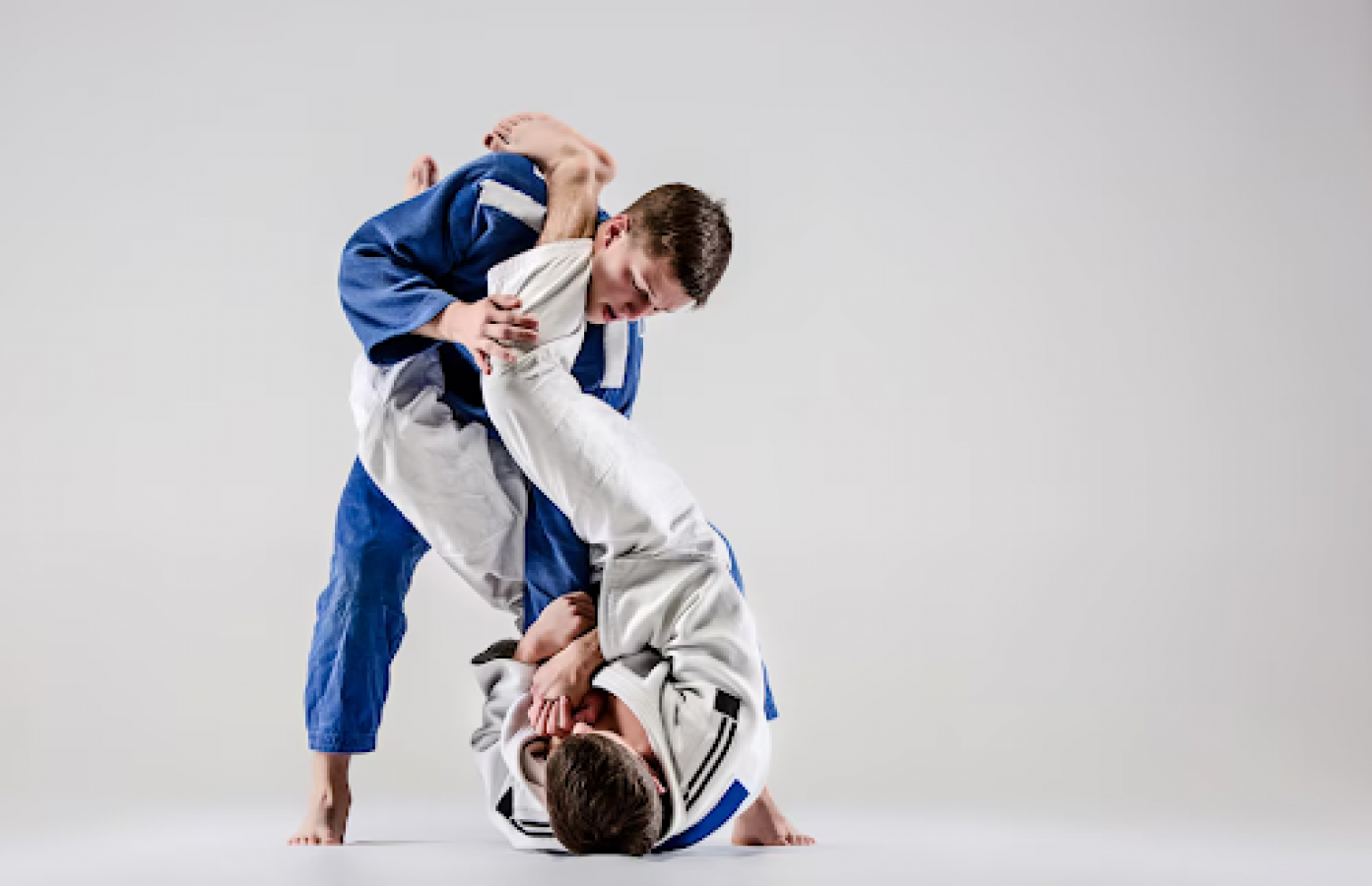Grappling Techniques for MMA: Key Elements and Execution

Ever watched an MMA fight and seen two fighters locked in a fierce struggle on the ground, twisting and turning like chess pieces in a high-stakes game? That’s called grappling techniques!
While striking gets a lot of attention in mixed martial arts (MMA), grappling is just as important. It’s the art of controlling, subduing, and submitting an opponent using skill, leverage, and technique. So, let’s dive in and break down the key elements and techniques of grappling, plus some handy training tips!
What Are Grappling Techniques in MMA?
Grappling in MMA refers to the various techniques used to control an opponent without striking. These techniques include takedowns, clinching, ground control, escapes, and submissions. The goal is to gain a dominant position and either neutralize an opponent’s offense or force them to submit.
Unlike pure striking disciplines like boxing or kickboxing, MMA fighters must be well-versed in grappling to defend against takedowns and submissions, while also being able to execute their own offensive maneuvers. Grappling techniques borrow heavily from disciplines like Brazilian Jiu-Jitsu (BJJ), wrestling, and Judo.
Key Elements of Grappling
To become a skilled grappler, you need to master several key elements. Let’s break them down!
1. Takedowns
Takedowns are one of the most important skills in grappling. If you can’t take your opponent down, you won’t be able to use your ground skills. A successful takedown requires speed, timing, and technique to off-balance your opponent and bring them to the mat.
One of the most effective takedowns is the single-leg takedown, where you grab one of your opponent’s legs and drive forward, forcing them to fall. This is great when your opponent is standing too upright, making it easier to get under them.
Another powerful technique is the double-leg takedown, which involves shooting in low, grabbing both legs, and driving through them to bring them down. Lastly, there’s the body lock takedown, where you wrap your arms around your opponent’s torso and use leverage to trip or throw them to the ground.
Timing is everything in takedowns. If you shoot for a takedown at the wrong moment, your opponent could sprawl (spread their legs and hips backward) and counter you.
2. Clinch Control
The clinch is where two fighters lock up at close range, trying to control each other’s movement. It’s often seen in wrestling, Muay Thai, and judo, and it’s crucial for setting up takedowns or strikes. When fighters are in the clinch, they battle for dominant grips, trying to gain an advantage over their opponent.
There are several ways to control the clinch. Underhooks occur when you get your arms under your opponent’s arms and lift up, giving you control over their movement.
Overhooks, on the other hand, involve wrapping your arms over your opponent’s to slow them down and control their posture. Another strong position is the body lock, where you wrap your arms around your opponent’s waist, limiting their ability to strike or escape.
3. Ground Control & Positioning
Once a fight hits the ground, the fighter with better positioning usually has the advantage. That’s why grapplers focus on achieving dominant positions before attempting to submit or strike their opponent. The goal is simple: control your opponent, limit their movement, and stay safe while advancing your attack.
One of the strongest positions is the mount, where you sit on your opponent’s torso, keeping them flat on their back. From here, you can land punches or set up submissions.
Another dominant position is side control, where you lie across your opponent’s body, keeping them pinned while looking for openings. Then, there’s back control, which is one of the best positions in MMA. If you get behind your opponent and wrap your legs around them (like a backpack), you can control them easily and look for a rear naked choke.
4. Submissions
Submissions are one of the most exciting parts of grappling. They allow a fighter to finish the fight without needing to knock out their opponent. By using leverage and technique, a fighter can force their opponent to tap out (submit) due to pain or risk of injury.
One of the most famous submissions is the armbar, where you trap your opponent’s arm and hyperextend their elbow. Another common submission is the rear naked choke, which is applied when you take an opponent’s back and squeeze their neck until they tap or pass out.
The triangle choke is another powerful move which involves trapping your opponent’s head and arm between your legs, cutting off blood flow to the brain. Submissions require precision and timing. If you rush a submission, your opponent might escape or counter it.
5. Escapes and Defenses
Grappling is also about escaping bad situations. If you get taken down, controlled, or caught in a submission, you need to know how to get out before the fight ends.
One of the most useful escapes is shrimping, a movement where you push your hips away to create space and regain control. Another common escape is bridging, where you explode with your hips to buck your opponent off and escape from a bad position.
When it comes to submission defense, the key is to recognize threats early and counter them before they’re fully locked in.
How to Perform Grappling Techniques in MMA: Step-by-Step Guide
Whether you’re a beginner or looking to refine your skills, here’s a detailed step-by-step breakdown of essential grappling techniques used in MMA:
1. How to Perform Takedowns
Takedowns are crucial for bringing an opponent to the ground, where grappling is most effective. Single-Leg Takedown targets one of your opponent’s legs to off-balance them and drive them to the mat. Here’s how to do it:
- Bend your knees and drop your weight, keeping your posture straight to avoid counter strikes.
- Take a deep step forward with your lead leg and lower your body to grab your opponent’s leg just above the knee.
- Wrap both hands around their leg and pull it toward your chest.
- Push off your back foot and drive through your opponent, forcing them to fall backward or off-balance.
- As they fall, maintain control and establish top position.
2. How to Perform Clinch Control
The clinch is a key position in grappling that allows you to control an opponent before executing takedowns or strikes. Underhooks and Overhooks are basic clinch control techniques used to manipulate an opponent’s upper body.
Step-by-Step for Underhooks:
- Get close and secure an arm underneath their shoulder. Your arm should be wrapped around their back, with your palm on their shoulder blade.
- Keep a strong posture. Stay upright to prevent them from countering.
- Use shoulder pressure. Push against their chest to disrupt their balance.
- From here, you can attempt a trip or body lock takedown.
3. How to Perform Ground Control & Positioning
Once the fight hits the ground, maintaining dominant positions is essential. Mounting an opponent gives you full control and allows for powerful strikes or submissions. Here’s the Step-by-Step:
- Get on top of their torso. Straddle their body, keeping your knees close to their ribs.
- Don’t lean too far forward or back.
- Control their wrists or head. Limit their ability to escape.
- Attack with strikes or submissions.
4. How to Perform Submissions
Armbar is a classic submission that targets the elbow joint. Here’s how to do it:
- Control Their Arm – Isolate their wrist and keep it pinned.
- Swing Your Leg Over Their Head – This locks their arm in place.
- Extend Your Hips – Push your hips up to force their elbow to hyperextend.
- Hold Until They Tap – Stop as soon as they submit.
5. How to Perform Escapes and Defenses
There are several techniques to perform escapes and defenses. The common one is escaping from mount position that you can do by trying this step-by-step:
- Use your hips to create space.
- Try to slide your leg out.
- Turn to your side and get to guard.
Grappling Training Tips for Beginners
To master grappling techniques, here are several tips you can do:
- Focus on basics like positioning and control before attempting advanced submissions.
- Repetition is key! Practice takedowns, escapes, and submissions repeatedly.
- Improve your conditioning. Grappling is physically demanding. Strength, flexibility, and endurance will help.
- Train with higher-level grapplers. Rolling (sparring) with skilled partners improves your defense and technique.
- Stay calm under pressure. Panicking in bad positions makes things worse. Stay relaxed and think through your mixed martial arts moves.
Ready to Improve Your Grappling Techniques?
Grappling is a game-changer in MMA, giving fighters the ability to control their opponents, dictate the pace of a fight, and secure victories through takedowns, submissions, and positional dominance.
If your children show an interest in martial arts, why not give them the best start? At Rockstar Academy, they’ll be part of the best Sports & Performing Arts Academy, offering top-tier physical activity programs designed to build strength, confidence, and discipline.
Our structured curriculum allows students to compete in RockOlympics, an exciting learning experience where they can push their limits and discover their true potential.
For those seeking a more tailored approach, Rockstar Academy also provides Private Instruction, offering personalized, skills-based training focused on each student’s individual goals.
With intensive coaching, real-time instructor feedback, progress tracking, and guided weekly exercises, this program is designed to help students become Life Champions.
Give your child the opportunity to grow into a confident, disciplined, and skilled martial artist. Sign up for a free trial class at Rockstar Academy today and let their journey begin!
FAQ
Is grappling more important than striking in MMA?
Both are equally important, but grappling gives fighters a big advantage in controlling the fight, especially against opponents with weak ground defense.
How long does it take to become good at grappling?
It varies, but consistent training for 1-2 years will build solid grappling skills. Mastery takes longer, depending on dedication and training frequency.
What’s the best martial art for grappling?
Brazilian Jiu-Jitsu (BJJ) and wrestling are the most effective grappling styles for MMA, each specializing in ground control and takedowns.



